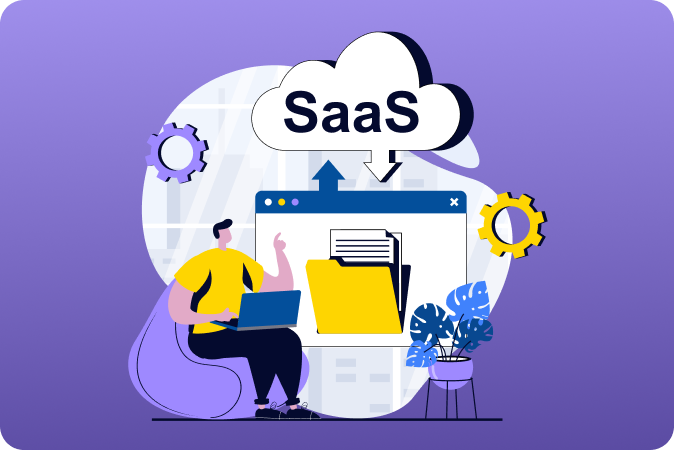
Should you start with a free SaaS tool or pay for one? Free SaaS tools give quick access with zero cost, while paid plans unlock advanced features, integrations, and priority support. In 2025, the global SaaS market is projected to exceed $300 billion, making choices overwhelming. This blog will break down key features in free and paid plans, show when to upgrade, explain how to do a SaaS pricing comparison, and offer practical examples to help you make an informed decision. So, let’s get started:
What Features Can You Expect in Free SaaS Tools?
Free SaaS tools work well for beginners or small teams. They cover essential functions and do not require any upfront investment. Startups, solopreneurs, and small project teams often begin with free plans to understand workflow compatibility.
Key features include:
- Basic Functionality – Handles daily tasks effectively.
- Limited Storage – Usually 1–5 GB; enough for small projects but may restrict growth.
- Small Team Support – Ideal for solopreneurs or teams under five.
- Basic Integrations – Connects to apps like Gmail, Slack, or Zoom.
- Community Support – Online forums instead of dedicated help desks.
Example Table: Free SaaS Features
| Feature | Typical Availability |
| Core Functions | Yes |
| Storage Capacity | 1–5 GB |
| Users Supported | 1–5 |
| App Integrations | 2–5 |
| Customer Support | Community forum |
Free SaaS tools let you test software without financial risk. They help evaluate workflow fit and app compatibility. Small businesses can explore multiple SaaS options while keeping overhead low. Keep in mind that as teams grow, limitations may appear, signaling it is time to consider paid plans.
Which Features Do Paid SaaS Plans Offer and How Do They Compare to Free Versions?
Paid SaaS tools are made to grow with your business. They offer more than basic features. Teams can access advanced functionality, handle larger workloads, and enjoy better security. Businesses that need automation, analytics, and multiple integrations often move to paid plans. These plans help teams work smarter and scale easily.
Core benefits are as follows:
- Advanced Features – Automation, analytics, custom dashboards.
- More Storage & Users – Supports larger teams and data.
- Priority Support – Fast email, chat, and phone help.
- Full Integrations – Connect CRMs, payment gateways, and marketing apps.
- Security & Compliance – SOC 2, GDPR, and encryption standards.
Example Table: Paid SaaS Features
| Feature | Typical Availability |
| Advanced Functionality | Yes |
| Storage Capacity | 50–500 GB depending on plan |
| Users Supported | 10–Unlimited |
| App Integrations | 10–30+ apps |
| Customer Support | Email, chat, 24/7 phone support |
| Security & Compliance | SOC 2, GDPR, enterprise-level encryption |
Free SaaS vs. Paid SaaS Plans — Which One Should You Choose?
Free and paid SaaS plans serve different purposes. Free plans help you start without risk. They work well for learning, testing, or small projects. Paid plans give you all features, better support, and room to grow. The right choice depends on your budget, team size, and goals.
| Aspect | Free Plan Features | Paid Plan Features | Best For |
| Cost | $0 per month | Starts from a monthly subscription fee | Individuals on a budget or testing tools |
| Access to Features | Basic tools only | Full access to premium and advanced tools | Teams that need complete functionality |
| User Limits | Small number of users or seats | Higher or unlimited users | Growing teams or multiple departments |
| Storage Capacity | Limited space | Larger or unlimited space | Businesses handling large amounts of data |
| Support Availability | Community forum or slow email replies | Priority support by email, chat, or phone | Businesses that can’t afford long downtime |
| Customization Options | Minimal personalization | Advanced customization and integrations | Companies with unique workflows |
| Security & Compliance | Basic protections | Enterprise-grade security and compliance standards | Industries with strict regulations or sensitive data |
Summary – When to Use Free SaaS vs. Paid SaaS?
- Choose Free if you are trying a tool for the first time. It works if you work alone or run a small personal project.
- Choose Paid if your work brings in revenue. It suits teams that need more features, higher limits, faster support, or stronger security.
Final Decision Rule: If missing features or delays can cost you money, choose the paid plan.
Quick Pros vs Cons
Free Plan
Pros
- No cost to use
- Simple to try and set up
- Works well for small or personal projects
Cons
- Limited tools and features
- Small storage capacity
- Slow or no dedicated support
Paid Plan
Pros
- Access to the full set of features
- Higher limits for storage and users
- Fast, priority customer support
Cons
- Requires a monthly or yearly subscription fee
- May include tools that are not immediately useful
In short, free plans are perfect for testing and light use, while paid plans are designed for growth, scalability, and professional needs.
When Should You Upgrade From Free to Paid SaaS Plans?
Upgrading at the right time keeps your business running smoothly. It prevents slowdowns and avoids missed opportunities.
1. You’ve hit storage limits
Free plans often come with very little storage. You may need to delete files to make room. This is a clear sign to upgrade. Paid plans give you more or even unlimited space.
2. Your team is bigger than your plan
Free versions limit how many people can use the tool. A growing team will quickly hit that limit. Paid plans allow everyone to work together without restrictions.
3. You need advanced tools
Automation, analytics, and reporting are often locked behind paid tiers. These features save time and improve how you track and manage work.
4. You need more integrations
Free plans rarely connect with all your other tools. Paid versions integrate with CRMs, marketing software, and project management apps. This creates a smooth workflow.
5. You can’t wait for support
Free users often wait days for help. Paid plans offer faster and priority support. Quick help can prevent costly delays.
Compare the cost to the benefits before upgrading. Choose a paid plan if it helps you work faster. Upgrade if it gives you more space or prevents lost opportunities.
Note: WeekMate uses a one-time license fee model instead of monthly SaaS subscriptions. This gives lifetime access with a predictable annual maintenance cost. It also avoids per-user fees, making budgeting easier for teams that expect to grow.
Practical Example: Free SaaS vs Paid SaaS
A small marketing agency started with a free project management tool. At the beginning, it was fine. One manager and two interns could keep tasks in order without much trouble. The free plan seemed like a cost-saving win.
But as projects grew, the cracks showed.
Challenges with the free plan:
- File storage limits: The tool capped storage at a few gigabytes. Files had to be deleted or stored elsewhere. This slowed down access and caused delays.
- Team collaboration issues: The free plan only allowed basic sharing. Real-time editing and multiple user comments often didn’t sync.
- Limited reporting features: They couldn’t track ROI or compare campaign performance over time.
The turning point:
The manager noticed that manual updates and switching between different tools were wasting time. Client reports took hours to compile. The decision was made to upgrade to the paid plan.
After upgrading, results came fast:
- Workflow automation removed the need for manual task tracking, saving about 30% of work hours.
- 100 GB extra storage eliminated file juggling. Everything stayed in one place.
- Advanced integrations with their CRM and analytics tools improved reporting accuracy and project oversight.
Key takeaway:
The difference between free SaaS and paid SaaS isn’t about price. It’s about fit. Before choosing, think about:
- How many people will use it
- How your team works day-to-day
- The goals you need to achieve
How to Make an Effective SaaS Pricing Comparison?
Step-by-step comparison saves money.
- List all tools.
- Identify current and future feature needs.
- Note free limits versus paid options.
- Evaluate security, integrations, and support.
- Score each criterion with Yes/No.
- Highlight tools meeting at least 80% of your needs.
Side-by-Side Comparison Example
| Feature | Tool A Free | Tool A Paid | Tool B Free | Tool B Paid |
| Core Functionality | Limited | Full | Limited | Full |
| Storage Capacity | 5 GB | 100 GB | 10 GB | 200 GB |
| Automation | No | Yes | No | Yes |
| Users Supported | 1–5 | 50 | 1–3 | 30 |
| Integrations | 3 apps | 20 apps | 2 apps | 15 apps |
| Support | Forum | 24/7 | Forum | |
| Security | Basic | Advanced | Basic | Advanced |
Wrapping Up
To choose the right SaaS, follow this simple process:
- Identify core business needs.
- Check free plan limits.
- Compare features, integrations, storage, and support.
- Test with real workflows.
- Look at pricing and upgrade options.
This approach keeps your choice informed, cost-effective, and growth-ready. You save time, avoid bottlenecks, and reduce unnecessary costs. Choosing the right tool now keeps operations smooth today and scalable tomorrow.
Find the SaaS Tools That Work for You
FAQs — Free SaaS vs Paid SaaS
Q: Should I use a free SaaS tool or pay for one?
Compare the benefits of starting with a free SaaS plan and moving to a paid SaaS plan. Include limits on features, storage, and users. Explain when upgrading is best for business growth.
Q: How do I run a SaaS pricing comparison?
Give a step-by-step SaaS pricing comparison. List tools. Compare features, storage space, user limits, integrations, support, and security. Highlight tools that meet at least 80% of business needs.
Q: Can a free SaaS tool grow with my business?
Assess how well a free SaaS plan can scale. Show the effect of limits on users, storage, and integrations. Compare this with the scalability of paid SaaS plans.
Q: Are there hidden costs in free SaaS tools?
List potential hidden costs in free SaaS plans. Include fees for extra storage, additional users, integrations, or advanced features. Suggest ways to check for upgrade requirements in advance.



